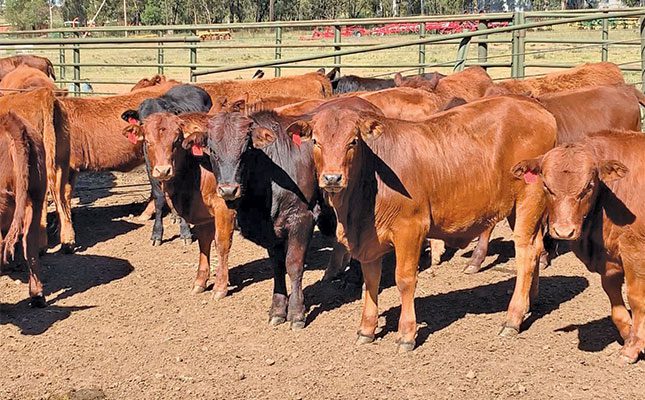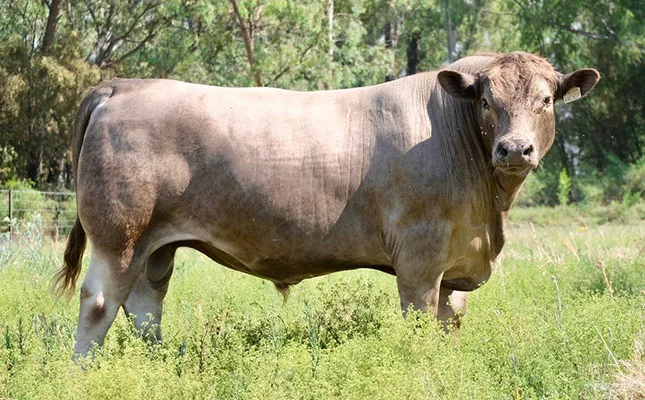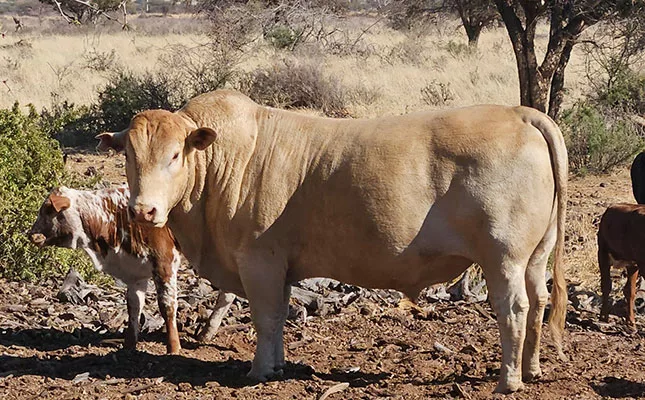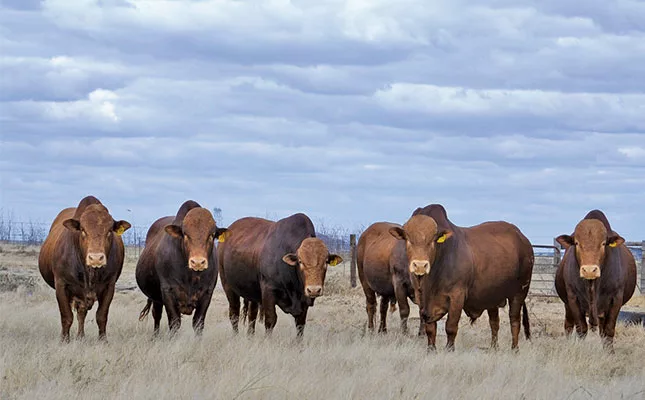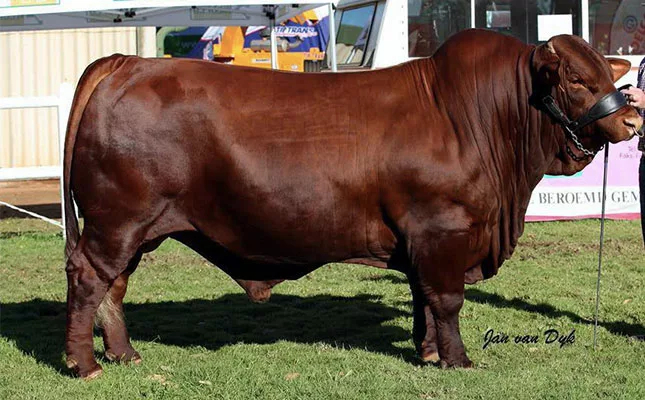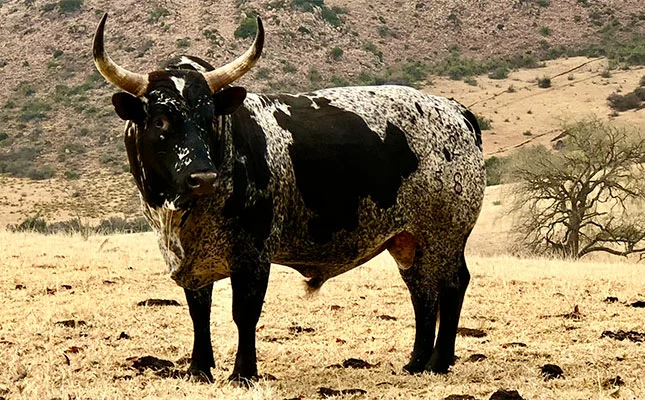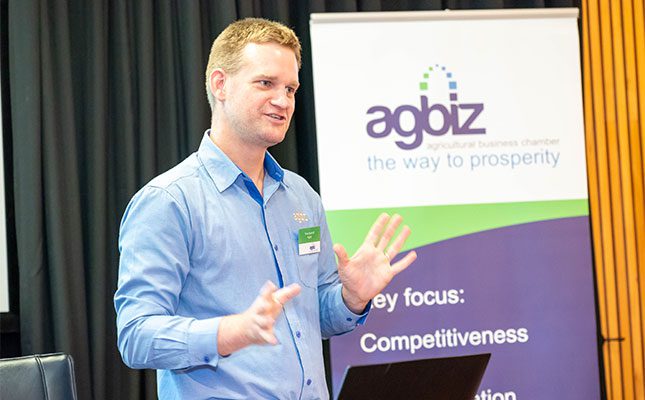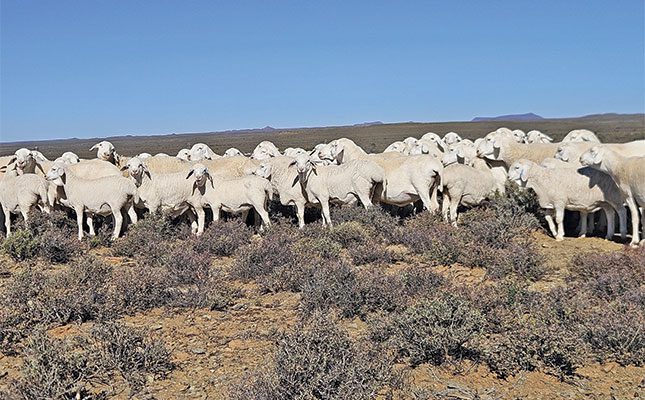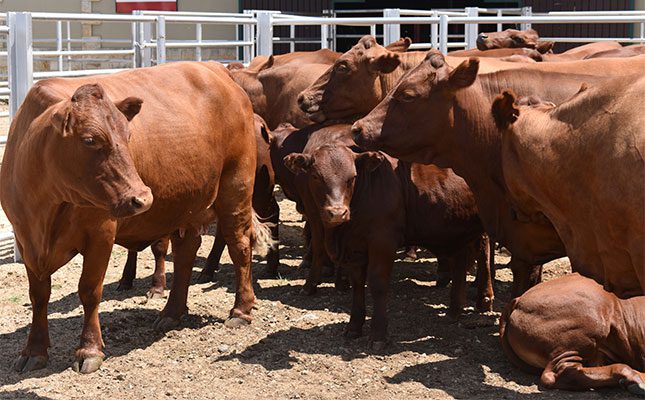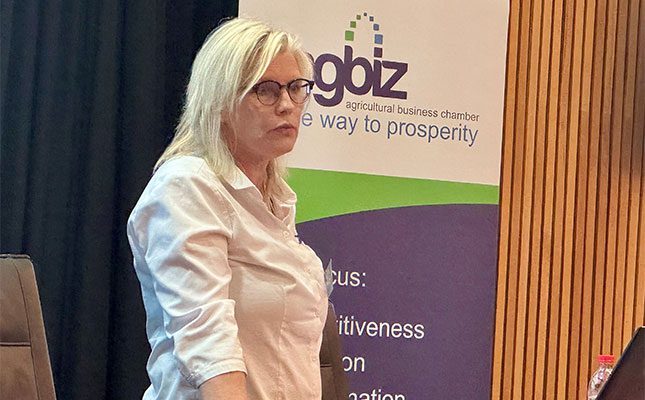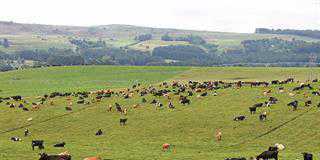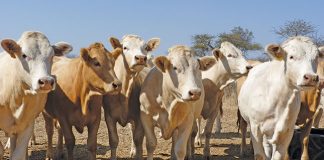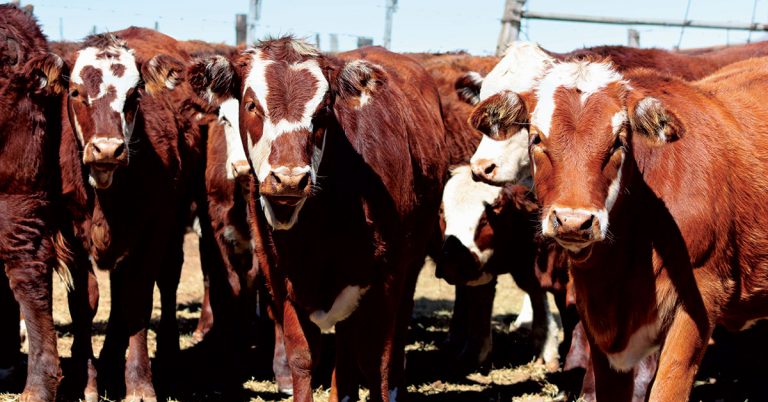
Photo: FW Archive
The backgrounding of beef animals takes place after they have been weaned and before they are placed in a feedlot.
During this period, the animals are usually left to graze and, as a result, their daily growth is slower than if they were intensively feedlotted on a concentrate ration for maximised growth.
One of the main reasons for backgrounding is to allow weaners time to build their skeletal frames and muscling, instead of the fat that they would be putting on in a feedlot.
Backgrounding cattle on forage is also far cheaper than giving them feedlot concentrate.
Chéri-Lynn Steyn, a master’s student in agricultural economics at the University of the Free State, highlights yet another advantage of backgrounding: during the process, weaners can be managed for health preconditioning before going to a feedlot.
This is only necessary, however, where beef calves have not been sufficiently managed with pre-weaning health protocols.
She explains that there are three types of backgrounding producers: the cow-calf producer, the specialised backgrounding producer, and the feedlot producer.
“[The first two] may decide to hold back a batch of weaners for a while in order to sell larger, backgrounded animals with more kilograms of beef on-the-hoof. The resulting higher income will cover the added expense of backgrounding the animals.”
The third type, the feedlot producer, buys weaners and, depending on their condition, may decide to background them before placing them in a feedlot.
Pasture vs drylot
Two types of backgrounding systems are practised, namely pasture and drylot. Each has
its advantages and disadvantages, explains Steyn.
Pasture backgrounding
This is typically extensive, with the animals roaming the grazing camps. They can feed on planted pasture, crop residue or natural veld. The last of these is the most widely available, most commonly utilised, and cheapest in South Africa.
The minimal dietary change from pre- weaning to post-weaning means that these young animals are less prone to digestive upset. They are also generally adapted to this extensive environment and are thus less stressed. In addition, pasture backgrounding usually does not produce the undesirable dust and mud of an intensive feeding environment.
Another advantage of pasture backgrounding is that it enables a beef producer to generate value, via kilograms of beef, from a forage resource that might be of no other use. A negative is that the individual animal’s average daily gain (ADG) is less than that of
a drylot-backgrounded or feedlotted animal.
Drylot backgrounding
“In drylot backgrounding, the more intensive feeding environment ensures faster growth and weight gain than does pasture backgrounding, but the change in environment and the move from grazing to bunk feeding can be stressful for the animals. They do nevertheless adapt rapidly to feeding from bunks.
“And because drylot backgrounding is similar to feedlotting, the animals convert quickly from the one system to the other,” says Steyn.
Flexibility, monitoring and health
A significant advantage of backgrounding is that it allows a farmer flexibility to decide when to market the backgrounded cattle to a feedlot.
In the US and Canada, which have a longer primary beef value chain than South Africa before animals are slaughtered, farmers spread the availability of their weaners to feedlots by adjusting the period of backgrounding.
This prevents a glut of weaners on the market during spring and early summer, which would depress weaner prices for this period. By spreading their supply of backgrounded beef animals throughout the year, US and Canadian farmers have better control over the per-kilogram on-the-hoof prices they get for animals sold to feedlots.
“Another advantage of backgrounding is that if the farmer buys in weaners to background, he or she can merge the smaller weaner groups from various sellers into a single large group for easier management,” says Steyn.
“A backgrounding system also allows the farmer to better monitor the ADG of the animals. This can vary from 500g to 1,2kg/ animal/ day, mostly in bone and muscle, depending on whether or not the farmer chooses to supplement forage with licks.”
Steyn adds that animals that have been backgrounded tend to experience fewer morbidities and mortalities when they are moved to the feedlot. This is because they tend to be larger, stronger and more adaptable than weaners entering the feedlot.
In addition, the backgrounded animals have often been vaccinated against, or treated for, various pathogens and parasites and do not require a sudden slew of potentially stress-inducing health protocols on entering the feedlot.
Advantages for the feedlot
Feedlots also benefit from backgrounded animals as the carcasses weigh more at slaughter than those of non-backgrounded animals that are feedlotted for the same length of time.
The feedlot also enjoys the advantage of feeding the previously backgrounded animals for a shorter time, at lower feed and management costs, and slaughtering them at the same weight as non-backgrounded animals.
According to Steyn, experts say there is usually very little difference between the composition of carcasses of backgrounded and non-backgrounded animals.
“Once they’re placed into the feedlot, backgrounded animals generally achieve greater ADG than weaners moved straight to the feedlot. But backgrounded animals tend to have a less efficient feed conversion ratio in the feedlot than do weaners.
“This is because weaners are still in a rapid growth phase and the concentrate feed that they receive in the feedlot is being used for skeletal and muscle growth. In contrast, the backgrounded animals tend to convert their feedlot ration more into fat deposition than bone and muscle growth.”
Challenges
Steyn explains that a difficulty with backgrounding beef animals in South Africa is that there are no hard and fast procedures to follow, such as which weaners should be backgrounded and which should be sold straight to the feedlot.
Some farmers argue that only lighter weaners should be backgrounded, while those that are heavier should be sold to the feedlot immediately.
There are also no South African guidelines on the optimal live weight at which weaners should be backgrounded. Literature on the subject is largely from North American systems, where markets demand a much heavier slaughtered carcass than what is desired in South Africa. Steyn plans to use her research to recitify this.
She adds that there are also no guidelines for how long an animal should be backgrounded in South Africa. As a result, farmers background their animals for anything from one month to 18 months.
In the absence of any clear research in this regard, local producers should consider their specific production conditions to decide on what length of time is best. For example, in a high-rainfall area with productive pastures or good-quality natural veld, backgrounding to a target live weight will be faster than in an area of lower rainfall and lower carrying capacity.
Economic aspects
“In terms of the economics of backgrounding, there are two aspects to consider. The first is the physical costs, including the cost of the feed. For example, if you produce both maize and beef cattle, and the maize price is high, it makes economic sense to background your cattle on grazing before placing them in a feedlot, where they’ll be fed the more expensive maize-based diet,” says Steyn.
The physical costs also incorporate what the price for beef weaners is at a particular time of year. The cow-calf producer and specialist backgrounder must consider if the price is attractive enough to sell weaners to the feedlot. If not, it may pay to background the animals first until on-the-hoof prices are favourable.
The same applies to carcass prices. If these are favourable, it might be best to finish the animals in a backgrounding system and then sell them directly for slaughter.
Opportunity costs are the second aspect of the economics of backgrounding. The beef farmer should consider whether or not it would be more financially prudent to use the land on which backgrounding could take place for another possibly more profitable farming enterprise.
“Yet another consideration with regard to opportunity costs is the variations in production cycles. For example, animals are likely to reach target weight faster when the grazing is good, and more slowly when grazing is inferior.
“Beef producers who background also have to consider whether or not they’ll have animals ready for marketing when feedlots are looking for animals to buy. Feedlot producers have to consider the effect that backgrounding will have on their feeding period as well as the total period that animals are part of their system.
“In short, there is no one-size-fits-all programme for backgrounding. Each producer has to decide whether backgrounding makes financial sense for his or her particular business.”
This article is based on a presentation given by Chéri-Lynn Steyn to the 2020 LRF Stockman School held online from 14 to 16 October 2020. Visit stockmanschool.co.za.
Phone Chéri-Lynn Steyn on 051 401 3990, or email her at [email protected].

